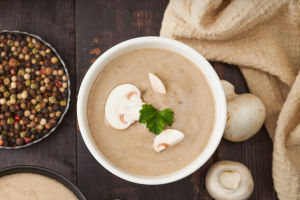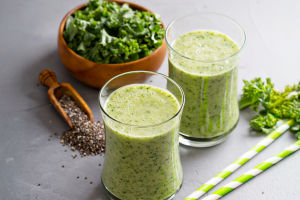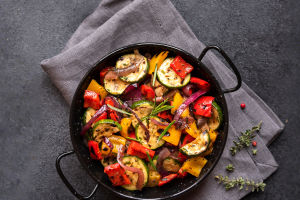Antioxidant Power Plants
If you've ever wondered why some people seem to age gracefully or recover quickly from everyday stressors, the answer might lie in their diet—specifically, the antioxidant-rich plants they consume.
While the term "antioxidants" gets thrown around in health ads and supplement bottles, the real source of these powerful compounds is often overlooked: plants.
But not just any plants—some are true powerhouses when it comes to protecting your cells from oxidative damage.
In this article, we'll spotlight four specific plants that are exceptionally high in antioxidants and show how they may directly support your health—from brain function to heart protection. You don't need to remember chemical names. What matters is how these plants function in your everyday meals.
What Are Antioxidants and Why Do They Matter?
Let's start with the basics. Antioxidants are compounds that neutralize harmful molecules in your body called free radicals. Free radicals are naturally produced during digestion and metabolism, but things like stress, pollution, and poor diet can accelerate their production.
If left unchecked, they can damage your cells, DNA, and proteins, leading to chronic inflammation and disease over time.
By eating foods rich in antioxidants, you help your body fight this silent damage daily. Think of them as tiny bodyguards working around the clock.
1. Blueberries: Small Berries, Big Impact
Blueberries top nearly every antioxidant list—and for good reason. They're packed with a class of antioxidants called anthocyanins, which give the berries their deep blue color.
What they do: Studies from Harvard School of Public Health suggest that anthocyanins in blueberries may slow cognitive decline by protecting brain cells from oxidative stress. A 2012 study published in Annals of Neurology found that women who ate two or more servings of blueberries per week experienced slower brain aging by up to 2.5 years.
How to use: Add a handful to oatmeal, yogurt, or blend into smoothies. Frozen berries retain most of their antioxidants, so keep a stash year-round.
2. Spinach: The Underrated Leaf
While kale often gets the spotlight, spinach is a quiet but potent source of antioxidants—particularly lutein and zeaxanthin.
What they do: These two carotenoids are stored in the eyes and are known to help prevent age-related macular degeneration. Spinach also contains alpha-lipoic acid, an antioxidant shown to help reduce blood sugar levels and improve insulin sensitivity in some studies.
How to use: Toss raw spinach into salads or sauté lightly with garlic. Cooking spinach actually increases the absorption of some antioxidants like beta-carotene.
3. Green Tea: More Than Just a Beverage
While technically a drink, green tea is made from the Camellia sinensis plant and deserves mention. It's incredibly rich in a group of antioxidants called catechins, especially epigallocatechin gallate (EGCG).
What it does: EGCG has been extensively studied for its role in supporting heart health and metabolism. According to a 2011 review published in The American Journal of Clinical Nutrition, green tea catechins can reduce LDL cholesterol and improve blood flow.
How to use: Brew 1–2 cups daily. Don't boil the water; steep in hot (not boiling) water for best results. You can also find matcha powder, which is a concentrated form of green tea.
5. Red Cabbage: Color Equals Power
Red cabbage may look like just a colorful addition to your plate, but it contains more antioxidants than green cabbage due to its anthocyanin content.
What it does: Red cabbage helps protect cells from oxidative stress and supports detoxification in the liver. It's also high in vitamin C—another antioxidant that boosts immune function.
How to use: Shred raw into salads, ferment into sauerkraut, or stir-fry with garlic and vinegar for a tangy side dish.
Choosing and Using Antioxidant Plants
You don't need to chase exotic superfoods. These common but powerful plants are often already in your grocery store. The key is frequency. Rather than relying on occasional servings or supplements, try to include antioxidant-rich foods in your daily meals:
• Add blueberries or spinach to breakfast
• Drink green tea in the afternoon
• Use red cabbage as a base for slaws
It's not about a magic solution. It's about building a habit that nourishes you over time.
One Final Thought
Are you already including some of these antioxidant-rich plants in your meals? If so, which ones do you find easiest to use? If not, which would you try first after reading this? Let this list be your starting point—your body will thank you in ways you may not even notice at first, but they'll add up in the long run.
Eating for health doesn't need to be complicated—it just needs to be consistent.
-
 Plants That Power ImmunityOne cup of mushrooms or berries a day could do more for your immune system than you think!
Plants That Power ImmunityOne cup of mushrooms or berries a day could do more for your immune system than you think! -
 Hype or Healing?Are "superfood" plants truly powerful—or just clever marketing in a trendy disguise?
Hype or Healing?Are "superfood" plants truly powerful—or just clever marketing in a trendy disguise? -
 Veggie Fun for KidsYour Kids Will Beg for Veggies After Trying These 3 Genius Recipes!
Veggie Fun for KidsYour Kids Will Beg for Veggies After Trying These 3 Genius Recipes!
Contact to : xyjph123@gmail.com
Privacy Agreement
Copyright © boyuanhulian 2020 - 2022. All Right Reserved.
Privacy Agreement
Copyright © boyuanhulian 2020 - 2022. All Right Reserved.